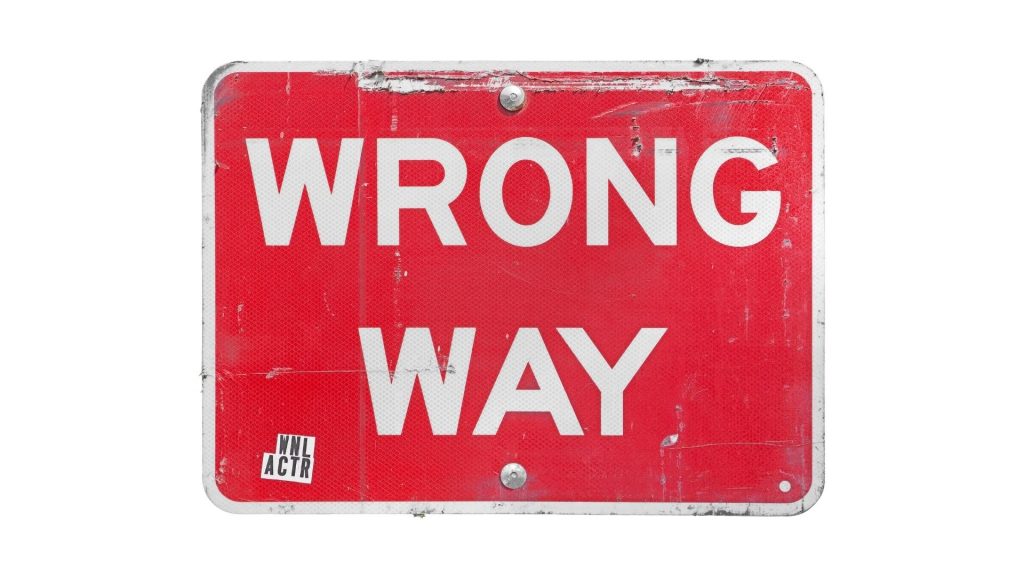Over the last couple of decades, influencer marketing has been rapidly gaining in popularity. One of the reasons for this is the unprecedented advancement in technology and social media platforms. Brands have started to build successful marketing campaigns and collaborate with popular figures on social media to increase their sales and anchor themselves as an authority in their marketplace.
But, despite thriving as one of the hottest industries in the digital marketing space, Influencer marketing is still a relative newcomer in terms of practices and strategy. As platforms, brands, and influencers attempt to define this new landscape, mistakes are bound to occur. Knowing the dos and don’ts of influencer marketing; using a robust strategy for your brand; understanding the ever-changing landscape – these are crucial to keeping your influencer marketing campaign from derailing.
Knowing “what to do” is as equally important as knowing “what not to do.” Let us understand how and why influencer marketing goes wrong, and how it can impact your brand.
When Does Influencer Marketing Go Wrong?
Not everyone gets the results they look for when they get involved in influencer marketing. A recent survey revealed that 61% of marketers face challenges in finding the right fit influencers for their marketing campaigns. The reason behind this is that there are different elements which need to be given due consideration prior to getting started.
For instance, teaming up with influencers who don’t have authentic followers, share inauthentic posts or don’t showcase their sponsorships will cost your brand, and have a negative snowball effect. Let’s delve deeper into these issues to understand how you can avoid these scenarios.

When your influencer has the wrong followers
With the influx of bots, fake followers and paid followers, it is easy for an influencer to hype up their follower count on social media platforms. One of the key factors that determines if an influencer’s follower base is authentic is the quality of their audience and their engagement with their posts. It is not uncommon for brands to confuse an influencer’s follower count with an audience that is genuinely interested in their content.
To avoid this problem, you need to know how to quantify their followers’ engagement. To work out the authentic engagement rate of an influencer, use the following formula:
[(Likes + comments) ÷ total no. of followers] * 100
The average engagement rate should be about 3%. If the engagement rate is greater than 3%, it reveals that the influencer has an even higher engagement – which is only a bonus to your brand! If it is less than 3%, you need to reconsider your options.
Vet your influencer prior to signing a contract to ensure that they are honest, reliable, comply with previous contracts’ guidelines (if they have had a previous sponsorship) and are effective at product promotion. While proven experience isn’t everything, you need to be sure that your influencer looks, sounds and acts authentically.
Another major blunder that marketers make is failing to ask for or determine their influencers’ audience demographics. Let’s say you want to release a product in The United States and you choose to work with an influencer. Your influencer has 100K followers but only 25% of them live in the United States, making your collaboration ineffective in terms of cost and reach. If you had taken the time to ask this question before you proceeded with your campaign, you would have been able to eliminate this candidate from your list of potential influencers.
The verdict: You can nail your marketing strategy when you team up with the right influencer. An influencer who can authentically tell stories, relate to their audience well, and remain transparent with them is the one that you should work with.
Must read! Get access to the AtisfyReach’s expert cheat sheet: 10 Effective Ways To Maximize Your Brand Presence On Social Media.
When your sponsored post seems inauthentic
Conducting a successful influencer marketing campaign is not just about finding somebody who is famous on social media to promote your brand. Audiences can tell if a post shows authenticity, especially when it is sponsored. Fostering paid partnerships is not about advertising or endorsing your brand alone but being able to connect with your audience at an emotional level. This is where an influencer’s storytelling capabilities comes into play. This is what brand management is all about.
Generically making a post about your brand will not draw a great deal of positive attention from your audience. Additionally, if your influencer creates a sponsored picture set that is cut, cleaned and styled to perfection, then your audience will not connect with it as it doesn’t feel natural. However, when the influencer relates a personal story with a brand and posts a thread of genuine pictures or a video, it encourages consumers to see it from their own personal viewpoint. Elements like these connect to customers on an intimate level and foster brand recall. If sponsored posts don’t resonate with the audience, we know that the campaign has failed.
Another scenario where customers find that the influencers posts are inauthentic is when they collaborate with too many brands and flood their feeds promoting them.
The verdict: One thing to keep in mind is that followers are there to connect with influencers on a personal level and witness their lives – not for a series of brand promotions. Too many brands on an influencer’s page will confuse your audience, which won’t help as the notion of them being your brand ambassador will be lost. You need to do your homework thoroughly in order to reap the benefits from working with an influencer.

When influencers posts don’t include ‘sponsored’ disclosure
All sponsored posts need to have disclosure that they are paid partnerships. It is illegal to post a sponsored image without denoting the sponsorship (check your nation’s trade commission for more information). Some influencers think that disclosing brands in sponsored posts might make their content less effective. This may drive them to conceal the sponsorship and cloud sponsored posts with other hashtags or even post ambiguous hashtags (like #partner, #collab, etc.), making the sponsorship unclear. Additionally, this will cause the audience to distrust the influencer in the long run.
Using unclear hashtags and not disclosing partnership with brands is unethical and misleading. An influencer’s sponsorship needs to be featured in the visuals and the audio as well in case of video posts. Influencers need to use hashtags like #ad, #sponsored, #paidpartnership to clearly indicate that their posts have been shared as part of a paid deal. However, cluttering the post with sponsorship notices will also not connect with the audience.
The verdict: As a rule, add a legal disclosure policy to your influencer’s media kit alongside the other campaign requirements and guidelines. This ensures that you are fully covered if your influencer fails to comply with specified terms.
When your campaign isn’t considered
Your relationship with the influencer is as important as your campaign itself. Once the contract has been signed, that’s where your work as a brand begins. When promises are made, you must ensure that they are delivered – on your side and on the influencer’s side. As such, you must ensure that your campaign is planned from end-to-end to ensure that you are able to meet your goals, deliver what is expected and balance your budget every step of the way.
You need to evaluate your resources (budget, staff capabilities, time etc.) the reach and power of influencers you’re collaborating with, and the anticipated audience response before you start your campaign. Considering these fundamental factors will help you prepare for and save you from any kind of issues which may arise. Failure to do so will result in a loss of brand credibility once your campaign launches and doesn’t have the audience response you expected. Can you imagine somebody negatively challenging your value proposition? You want to make sure you have all of your bases covered before you launch your influencer marketing campaign.
The verdict: If you promise something that you cannot provide, then your campaign won’t be a success. You need to take precautions and always be alert to deliver your value to both the influencer and the consumers alike, or your efforts will be in vain.
Looking for tips to create your actual campaign? Read our blog: 7 Steps For Creating A Good Influencer Marketing Strategy.
When you work with an influencer with a bad reputation
Maintaining your brand’s reputation is one of the foremost responsibilities of your marketing team and its associates (such as your influencer team). Building a positive reputation takes years and requires constant upkeep, however, it takes no time to burn out and develop a negative reputation. In this digital day and age, bad news spreads faster than wildfire. This is why you need to be meticulous in getting the right influencers on board.
If your brand has family friendly values, then you would likely want to work with someone who is similar rather than working with someone who is risque or offensive. Collaborating with influencers who are in the limelight for the wrong reasons like making insensitive posts or making racist comments is something which is best avoided regardless of the industry you’re in as it can lead to the development of a negative brand image.
Collaborating with the wrong influencers can lead your audience to subconsciously distrust your brand and purchase fewer products, which will lead to lower conversion rates. This will not benefit your brand, so ensure that you choose the best influencers that match your brand values as closely as possible.
The verdict: The rewards of working with an influencer with a good reputation will pay off for your brand in the long run. Instead of rushing in, vet your choice of influencers thoroughly. Study their profiles, see if they are engaged in activities which don’t reflect your brand values. If everything meets your standards, you can proceed with vetting their ability to carry out your campaign. The ground rule here is that their reputation is your reputation. Don’t trade your brand reputation for anything.
Quick guide to the rescue! Read our blog: How To Choose The Best Influencer For Your Business.

Influencer Marketing Gone Wrong
Unfortunately, sometimes influencer marketing does go wrong. When brands don’t consider the audience reaction to their message they’re sending out, don’t check their influencers’ posts or work with people that have a bad reputation, the result can be disastrous – like the examples we’re about to read about. Read on to learn and avoid these situations at all costs when you start an influencer marketing campaign.
Kendall Jenner x Pepsi
Probably one of the most embarrassing influencer marketing campaigns was Kendall Jenner’s Pepsi ad. The ad featured Kendall Jenner joining a protest post a photoshoot she was involved in. The real problem here was that the protest in the ad featured imagery from the Black Lives Matter movement. Jenner joins the protest randomly, grabbing a Pepsi can from an ice-bucket, walks up to a police officer and hands him the drink to de-escalate the situation. The ad was accused of trivializing the Black Lives Matter movement, and was called insensitive and thoughtless.
Scott Disick x Bootea
One colossal blunder was Scott Disick’s first sponsored post by Bootea. While posting a picture of himself on Instagram with a Bootea shake, he included the company’s instructions of when to post the content in the caption. It reads, “Here you go, at 4pm est, write the below Caption: Keeping up with the summer workout routine with my morning @booteauk protein shake!” Although it happened accidentally, needless to say that it is the reward for absolute negligence. While we don’t recommend micro-managing your influencers, we do think that checking that they’re keeping up your brand standards is the best thing to do – to save you both from embarrassment.
Logan Paul
Talk about being insensitive. Logan Paul’s YouTube video about his trip to the Aokigahara forest (a place known for its high suicide rates) cost him everything when he posted a clip of someone who had died there. Laughing and joking about the scene led to YouTube temporarily suspending his account, and many of his marketing proposals being withdrawn as the matter came to light. This is the perfect example of what can happen when you team up with an influencer who has an image that doesn’t align with your brand values.
Working with the wrong influencers can do more harm than good. Choose wisely! An endorsement from the right social media influencer can work wonders for your brand. Read our guide: How To Choose The Best Influencer For Your Business.

So, How Can You Avoid These Situations?
These incidents that you’ve read through are a nightmare to any brand irrespective of their size or the scope of their marketing campaign. But don’t be worried, there are ways to take precautions before getting started. Connecting to the right target audience with the right message, on the right platform, with the right influencer and driving results is not an impossible task to achieve. Let us now look at how to avoid ending up like this to connect with the audience in a way that truly engages them with your brand. After all, in the business world, the consumer is king!
Research and vet your ideal influencers
A marketing campaign launched without thorough market research is incomplete, uncompetitive, and bound to fail. Similarly, influencer research is an important aspect of your influencer marketing campaign. You need to consider every possible aspect of your campaign while studying your potential influencers.
As a business, you have a target audience for every brand. Likewise, every influencer has a follower base and your job is to analyze if their followers are your target audience. Failing to do this check, or not doing a thorough research consequently will cost you a fortune. For instance, let’s say your product falls in the IT course e-learning segment. If you choose to market an economics course to them it will of course, not get you the result you require.
Preparing a list of potential influencers is a necessity and your prospect list needs to be updated on a regular basis. Various businesses bombard well-known social media influencers with product promotion proposals. This is the reason why you may be disappointed with the replies (or lack thereof) you receive from them. Another important element that we’ve already laid emphasis on is how important it is to have an influencer on board whose values, principles, and image align with your brand values and brand image.
Someone with a huge follower base, say 1 million followers, has the capability to give a grand exposure to your brand, but won’t always give you the best result possible. As mentioned earlier, influencers can be segregated into different categories based on their follower count. Rather than trying to work out things with influencers who have a large follower base, try sending your proposal to those with a lower follower count.
Studies reveal that micro influencers’ posts generate 85% more engagement when compared to those with 100,000+ followers. Additionally, micro-influencers tend to charge much less per post. In every case, edging forward with micro-influencers proves to be the best alternative and a win-win situation.
Don’t micromanage them
One of the mistakes that brands make is expecting social media influencers to work exactly like actors who speak word-for-word in their ads. You need to be mindful that the influencers are your brand ambassadors. You didn’t choose them to accelerate your sales, but to expand your reach and increase brand awareness. Not giving influencers the freedom to create their own content for your product will have a negative impact on both your brand and the influencer subsequently.
Why? Because influencers require creative freedom. Don’t forget that their follower base is the result of their ability to connect to their audience on a personal level. If you make influencers repeat the content the same way that your branding team handed it over to them, then the essence of the influencer’s voice is lost. Their audience will be clever enough to understand that these points were pre-written, and not a direct recommendation from the influencer.
We cannot stress this enough – authenticity is the key selling point of working with influencers. When influencers promote your product, they interweave their story with it, creating a genuine connection between it and themselves. Instead of parroting to their audience to make the purchase, they give the product a purpose and create a need to purchase. This is what makes a sponsored post authentic and connects to your audience on a personal front.
Giving them space to create content doesn’t mean that you shouldn’t check up on them. Maintaining a balanced approach is the key. You can guide on how to post, but don’t tell them how to do it. At the same time, ensure that they stick to the guidelines and comply with the contract.
Make things easy
When we take a look at influencers’ accounts, we know that what they put on social media is not everything about their life. As mentioned before, they often have many clients to work with, and so you cannot burden them with an excessive workload. A survey conducted by MIT Sloan Management Review reveals that 46% influencers had more than seven clients to work with at any given time. In order to keep their audience engaged, they plan, strategize, and work out their activities.
Like any contractor, the last thing the influencers will want to deal with is a bureaucratic brawl between them and the brand that they are partnering with. Ensuring that they get paid within the committed deadlines and that other aspects of the contract are met will make your journey with them as smooth as possible.
Keep in mind that when you’re approaching influencers that they too are humans. When you’re hiring them, you are not just purchasing advertising space for your brand in the market, but also working with those who toiled to build a community all along, right from the start. Considering these factors will help you to foster a strong and smooth relationship with them.
Measure your results
Tracking influencer campaigns can be difficult. It is even more difficult when you are working with multiple influencers for one campaign. Don’t fret! There are ways to track your campaign’s progress. By tracking the increase of the traffic on your site, as well as increase in the conversions, you can measure your progress without any difficulty. Additionally, you can review the insights from your influencers posts, and ask them to generate a report for you.
Alongside the methods proposed above, you can also give an influencer a specific URL with UTM features and track it using Google Analytics. Also, you can give every influencer a particular discount coupon code, to understand how many sales have been generated from that code. Most people are enthusiastic about product discounts. This can meet two goals with one easy method, wherein you can compel consumers to purchase your product, drive them to your website, and track results simultaneously.
Work with an influencing marketing brand that you can trust
As we’ve found out so far, influencer marketing is not as easy as it seems. Building a prospective list of potential influencers, vetting them thoroughly, understanding if they are a proper fit for your brand, checking if they have similar values to your brand values, checking if they’ve done justice to their previous sponsorships, tracking the campaign and so on can be tedious and time consuming.
In order to ease your burden and get the work done without any unpleasant experiences, you invest in the help of a professional influencer marketing service provider that you can trust. With the rise of social media platforms, influencer marketing is becoming more prevalent across all platforms and being a more preferred marketing channel.
Keep in mind that influencer marketing is not just a one-time business ritual, but also a series of collaborations, leading to proper influencer-brand relationships in the long run. Here at AtisfyReach, we can help you manage your entire workload from finding reputable influencers, distributing your campaign professionally in a smooth manner, and helping you avoid unnecessary problems. Our upcoming influencer marketing platform will help you find influencers, vet them, create campaigns, track analytics and more from one centralized location. Cut out the middleman and get results with AtisfyReach.
Here’s why should you use an Influencer Marketing Agency. Read our blog: How Do Influencer Marketing Agencies Work?

Influencer marketing has the potential to go wrong. But brands who take the necessary precautions and learn from the mistakes of others, are the ones who win big!
To cover all the bases, get free access to our guide: The Ultimate Guide To Influencer Marketing: Everything You Need To Know.
Pulling off successful influencer marketing strategies can be difficult. Still want to give it a shot? Try learning from expert tips provided our blog: How To Create An Influencer Marketing Strategy.
Our platform AtisfyReach helps marketers automate key tasks such as influencer discovery, campaign management, contracts, and payments. Our platform uses AI and machine learning to target the right influencers based on the target audience you are looking for, gives real-time data on the campaigns, and makes reporting easier and faster for you.
Scale your influencer campaigns with micro-influencers on AtisfyReach. Book a free demo here.





